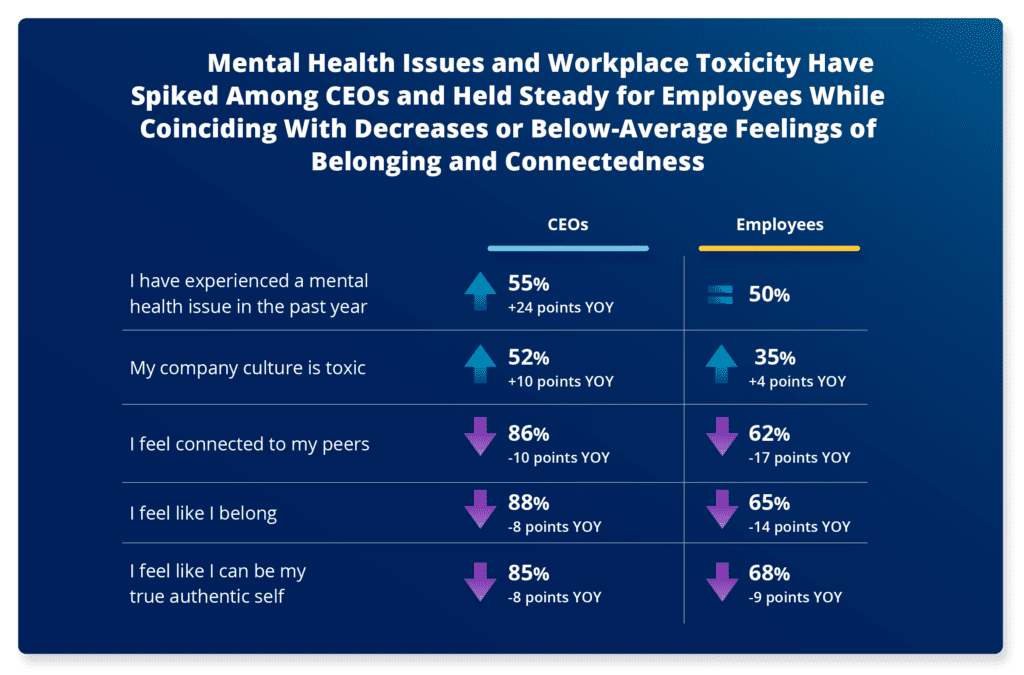
Our State of Workplace Empathy data revealed an alarming statistic: 70-point gap exists between the benefits employees rank as the most valuable to their wellbeing and what they say their employer offers.
Worse, when we dig deeper into the data, we found more troubling trends on how this gap is hurting workplace culture:
Empathy plays a big role in creating a workplace where employees can thrive, and that directly translates into productivity and business performance. Benefits aren’t an exception—they’re one of the biggest ways you can put empathy and inclusion into action.
Here are some quick wins you can put into play today leveraging your benefits programs to show employees that DEIB is more than just a buzzword.
When people feel appreciated and valued for their unique abilities and individual lives, they’re more likely to experience a sense of community at work. However, our data shows that when this is not the case, it coincides with declines in mental wellbeing.
Experiencing feelings of isolation, inequality, exclusion, and disrespect can negatively impact mental health and fuel workplace toxicity. Our data shows that declines in feelings of belongingness, connectedness, and authentic self all coincide with a rise in mental health issues and workplace toxicity for everyone:

When employees don’t feel like their wellbeing needs are being heard or supported, how can we expect them to feel like they belong in the workplace?
9 in 10 employees say that mental health is just as important as physical health, but nearly 70% of employees think that today’s organizations view someone with mental health issues as weak or a burden.
Layer on top of this the declines we’re seeing in belongingness and ability to be one’s authentic self and it’s no wonder that employees are more likely to seek mental health support outside of work than through the resources provided by their employer.
Benefits are one of the top ways you can show your employees that you support them at work and in their personal lives. Here are three things you can assess in your benefits programming to create a more inclusive workplace:
From LGBTQ+ mental health needs to employees who may struggle with chronic conditions, your employee population faces an infinite range of needs and goals. A benefits program that encompasses the needs of different demographics, from gender to physical abilities, can make a huge difference in how well your employees feel supported and cared for at work.